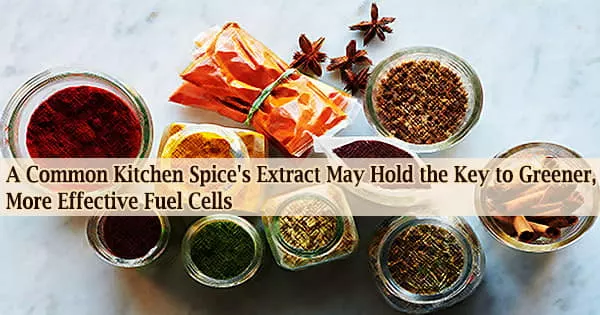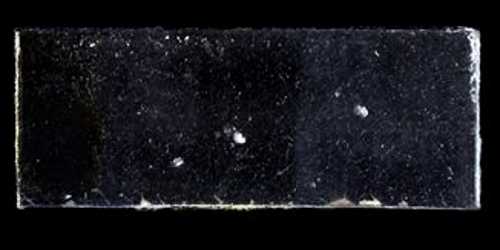An ingredient from the common spice turmeric may help create safer, more effective fuel cells.
Curcumin, a component of turmeric, and gold nanoparticles were combined in a novel way by scientists at the Clemson Nanomaterials Institute (CNI) and their associates from the Sri Sathya Sai Institute of Higher Learning (SSSIHL) in India to create an electrode that effectively converts ethanol into electricity while using 100 times less energy.
The discovery takes replacing hydrogen as a fuel cell feedstock one step closer, however, the study team still has to do additional testing.
“Of all the catalysts for alcohol oxidation in alkaline medium, the one we prepared is the best so far,” said Apparao Rao, CNI’s founding director and the R. A. Bowen Professor of Physics in the College of Science’s.
Instead of burning fuel, fuel cells use a chemical reaction to produce energy. They provide electricity for backup power systems, portable electronics, buildings, and automobiles. Fuel cells powered by hydrogen are extremely effective and do not release greenhouse emissions.
Although hydrogen is the most prevalent chemical element in the universe, it can only be found naturally on Earth in compounds with other elements in liquids, gases, and solids, therefore it must be obtained from other materials like natural gas and fossil fuels. The required extraction increased the cost and environmental impact of hydrogen fuel cells.
Additionally, as hydrogen is a compressed gas when utilized in fuel cells, storage and transportation are made more difficult. Because it is a liquid, ethanol, an alcohol produced from corn or other agricultural feeds, is both safer and more portable than hydrogen.
“To make it a commercial product where we can fill our tanks with ethanol, the electrodes have to be highly efficient,” said Lakshman Ventrapragada, a former student of Rao’s who worked as a research assistant at the CNI and is an alumnus of SSSIHL.
“At the same time, we don’t want very expensive electrodes or synthetic polymeric substrates that are not eco-friendly because that defeats the whole purpose. We wanted to look at something green for the fuel cell generation process and making the fuel cell itself.”
In the beginning stages of the project, we did not imagine other applications that gold-coated curcumin could support. However, before the end of the alcohol oxidation experiments, we were fairly confident that other applications are possible. Although we don’t have a complete understanding of what’s happening at the atomic level, we know for sure that curcumin is stabilizing the gold nanoparticles in a way that it can lend itself to other applications.
Lakshman Ventrapragada
The anode of the fuel cell, where ethanol or another feed source is oxidized, was the area of interest for the researchers. Platinum is frequently used as a catalyst in fuel cells.
However, Ventrapragada claimed that reactive intermediates such carbon monoxide induce toxicity in platinum. It is also expensive. The catalyst utilized by the researchers was gold.
The researchers employed curcumin due to its distinct structural properties in place of conducting polymers, metal-organic frameworks, or other complicated materials to deposit the gold on the electrode surface. The gold nanoparticles are decorated with curcumin to stabilize them and create a permeable network around them.
A 100 times lower electric current than in earlier investigations was used by the researchers to deposit the curcumin gold nanoparticle on the electrode’s surface. The surface area exposed to the chemical reaction is reduced without the curcumin coating because the gold nanoparticles aggregate, according to Ventrapragada.
“Without this curcumin coating, the performance is poor,” Rao said. “We need this coating to stabilize and create a porous environment around the nanoparticles, and then they do a super job with alcohol oxidation.”
“There’s a big push in the industry for alcohol oxidation. This discovery is an excellent enabler for that. The next step is to scale the process up and work with an industrial collaborator who can actually make the fuel cells and build stacks of fuel cells for the real application,” he continued.
However, the research might have more far-reaching effects than just better fuel cells. According to Ventrapragada, the electrode’s special characteristics might make it useful for use in sensors, supercapacitors, and other devices in the future.
Rao’s team is evaluating the electrode as a sensor that could assist in identifying variations in the level of dopamine in partnership with the SSSIHL research team. Disorders including Parkinson’s disease and attention deficit hyperactivity disorder have been linked to dopamine.
Researchers were able to quantify dopamine with this electrode using a more affordable technique than those now in use when analyzing urine samples taken from healthy volunteers, according to Rao.
“In the beginning stages of the project, we did not imagine other applications that gold-coated curcumin could support. However, before the end of the alcohol oxidation experiments, we were fairly confident that other applications are possible,” Ventrapragada said.
“Although we don’t have a complete understanding of what’s happening at the atomic level, we know for sure that curcumin is stabilizing the gold nanoparticles in a way that it can lend itself to other applications.”
















